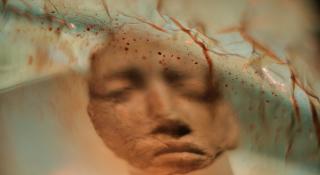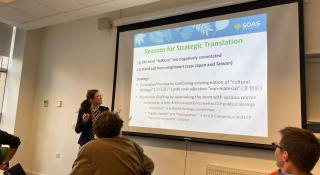Breadcrumbs navigation
Connectivity, resistance and re-appropriation in Indian Ocean Worldmaking after Empire
Sarah Gray (SOAS) responds to Worldmaking after Empire: The Rise and Fall of Self-Determination (Princeton University Press, 2019) as part of a book symposium from the Africa and International Studies Working Group.
The picture on the front cover of Adom Getachew’s insightful new book is none other than Frank Bowling’s Barticaborn – the title refers to the town on the Essequibo River in north Guyana where Bowling was born. Completed in the mid-1960s, the original painting is a two-metre-tall invitation to feel, to question, to rewrite the rules or simply to pause for thought. Images of the African continent echo each other across a canvass that spills hues of indigo and electric pink – it’s really exciting.
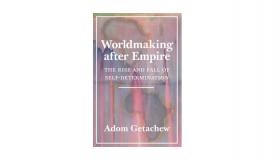
Whether purposeful or serendipitous, this choice of front cover is an apt reference for Worldmaking After Empire which likewise inspires new ways of seeing, thinking and doing. Both Bowling and Adom Getachew’s contributions brim with stories of connectivity, resistance and re-appropriation. It’s hard not to want to grab a paintbrush or open a word doc and engage physically and critically with what they have put in the world. The former I did immediately after the Tate’s retrospective of Bowling’s work last year, the latter I’d like to do now by revisiting Adom Getachew’s book in the context of Mauritian decolonisation. In doing so I’ll take a first step in extending the journeys of Worldmaking after Empire beyond the Caribbean and continental Africa to the Indian Ocean. For those less into text-based responses, feel free to skip the black and white and go straight to the colour responses set out in the accompanying images below.
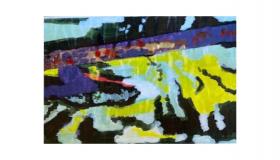
Thank you Frank Bowling, June 2019
Connectivity from London to India
Adom Getachew’s protagonists regularly criss-crossed the Atlantic and were ‘deeply influenced by their experiences of travel, education abroad, and encounter with fellow colonial subjects’ (6). The globe-trotting that Adom Getachew describes built what Robbie Shilliam calls the ‘global infrastructure of anti-colonial connectivity that exists underneath and surreptitiously runs through the imperial hierarchy of Britannica’ (2015, 30).
It’s easy to identify parallels in the early physical and intellectual journeys of anti-colonial world-makers like Kwame Nkrumah or Michael Manley and Mauritius’ ‘father of the nation’ Seewoosagur Ramgoolam. A decade before Nkrumah and two decades before Manley would walk the streets of Britain’s furiously beating imperial heart, Ramgoolam arrived in London, via boat to Marseille and overland from there, to study medicine. Ramgoolam was no philosopher or acclaimed orator but he was a regular on the 1920s London anti-colonial world-making scene. Unlike his later colleagues who sought federal continental projects or island unions, Ramgoolam’s activism was grounded in Indian internationalism.
Many Mauritian descendants of Indian indentured labourers developed an ever-closer connection to India during their formative student years either as members of an ‘Indian’ diaspora or in India itself. When the young Ramgoolam began his studies in London he lived in halls provided by the Indian Student’s Association. He established a deep rapport with fellow Indians living in the cold British capital to become the president of one of the successors to the Indian National Congress’s London office. Many of his peers in London, like political activists including Jawaharlal Nehru, saw India ‘not as a fixed territorial unit but as a diasporic community of people spread throughout Asia, Africa and Europe’ (Irwin, 2011, 13). Other overseas students who would also become key figures in pre- and post-independence Mauritian politics, such as Basdeo Bissoondoyal, chose warmer climes and spent several years studying in India at a time of fierce anti-colonial struggle there. The sense of Indian identity among many Mauritians of their generation was so strong that they internalised the Indian independence struggle as their own.
This sentiment extended beyond those who had studied abroad to the houses of countless Mauritians. Ramgoolam’s biographer writes that at the time of 1930s Indian civil disobedience campaign ‘Almost in every [Indian Mauritian] home, the[re were] pictures of Indian nationalist leaders like Gandhi [and], Nehru’ (Mulloo, 1980, 75). A later biography of Ramgoolam goes so far as to suggest that it was pride in ‘Indian origins … religion and culture’ that drove Mauritian anti-colonial sentiment (Shillington, 1991, 21-22). Much later, Mauritian Independence Day (12 March 1968) was reportedly chosen to honour the first day of Gandhi’s Salt March on 12 March in 1930.
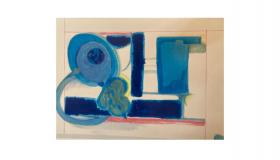
Connectivity, March 2020
In this multicultural story, Ramgoolam and others looked back to their Indian decolonial past to navigate their colonial present. The international outreach of Indian nationalism, illustrated by the first Indian Council of World Affairs in 1943, combined with the successes of its domestic efforts, culminating in Indian independence in 1947, inspired Mauritian political and social activism. In the same period, the Labour Party, which Ramgoolam would later lead to independence, consolidated its reputation as a force to be reckoned with while the seeds of Hindu revivalism, promoted initially by Bissoondoyal, were planted throughout the island (Eisenlohr, 2006, 45).
Though such snapshots of anti-colonial world-making recur throughout Mauritius’ journey to independence in 1968, they do not tell the whole story. Far from being a firebrand anti-colonial activist, Ramgoolam – known as Sir Seewoosagur Ramgoolam after he accepted a knighthood from the Queen in 1965 – was actually a rather conservative figure. Moreover, beneath Ramgoolam's drawing on Indian diasporic identity and on Congress anti-colonial nationalism lay a politics of exclusion which left out, among others, the Mauritian Creole community. These complexities and contradictions stimulated new projects of resistance in the post-independence period.
Pre- and post-independence projects of resistance
In 1966 artists from across the Atlantic participated in the first World Festival of Black Arts held in Senegal. The likes of jazz musician Duke Ellington arrived from North America, négritude poet Aimé Césaire came from the West Indies, playwright Wole Soyinka travelled from Nigeria and although Frank Bowling, who had reservations about being exhibited under the rubric of ‘Black Arts’ was not there in person, he won the festival’s Grand Prize for painting.
The month-long festival showcased the vibrancy and creativity of globally connected black artists at precisely the moment that anti-colonial world-making was on the ascendancy. Adom Getachew chronicles how anti-colonialists used the UN to engender the seismic shifts needed to create a world of non-dominance. This included the passing of Resolution 1514 on the Declaration on the Granting of Independence to Colonial Countries and Peoples in 1960, the expansion of non-permanent seats in the UN’s council in 1963, and the passing of Resolution 2131 which prohibited ‘informal intervention and any “measures to coerce a state to either subordinate . . . its sovereignty rights or to secure from it advantages of any kind”’ in 1965 (101).
In Mauritius too, the mid-1960s saw the culmination of decades of resistance to colonial domination. Delegations of Mauritian politicians met with British officials to negotiate self-government, an extended franchise, a new constitution, and eventually polls that would decide Mauritius’ sovereign future. Political parties worked day and night to win over voters ahead of the 1967 general election that ostensibly asked whether Mauritians wanted independence from or continued association with Britain. The former implied Hindu dominance over the political institutions governing the diverse island, the latter suggested maintenance of the status quo. The independence Labour party won a narrow victory: 44% voted for the anti-independence coalition.
Independence in Mauritius didn’t mean liberation from alien rule. Mauritius was, in many ways a creation of the dependency based imperial system, it had been populated, governed, and economically developed explicitly to feed sugar to the colonial machine. Sugar quotas agreed as part of the independence settlement maintained existing patterns of economic dependency. So, decolonisation, in Nyerere’s terms of economic sovereignty, was a chimera. But territorially too, something was amiss: in 1965, three years before Mauritian independence, with a customary lack of humility and a total disregard for Resolution 1514, Britain ‘administratively excised’ the Chagos Archipelago from Mauritius to create the British Indian Ocean Territory (BIOT). In so doing Britain coerced the Archipeleago’s population from their homeland and forced them to resettle, for the most part, on the Mauritian mainland.

Resisting, September 2019
Despite widely held anti-BIOT sentiment, the post-colonial government’s politics of accommodation tended to overlook Mauritius’ unequal integration into international systems. It also skirted over passionately felt domestic divisions. Ramgoolam’s approach soon attracted criticism from a younger generation of Mauritian politicians who sought to transcend hierarchical class structures and communalism while committing to international non-alignment and demanding the return of the Chagos Archipelago.
Like the architects of the New International Economic Order that Adom Getachew describes (Chapter 5), these dissenting voices imagined a radically different reality premised on an equitable global system. Their message, delivered by the Mauritian Militant Movement (MMM), spread like wildfire through disaffected areas of Mauritius – particularly those carrying the burden of the 1970s recession. The MMM was also popular among the huge proportion of Mauritians who could not locate their decolonial past in India and who felt alienated by the government’s identification with Hinduism.
Despite a landslide at the 1982 general election, the MMM government folded within a year. The coalition that succeeded it maintained deferential relations with India, accepted an IMF economic package and refrained from overtly antagonising Britain (Allen, 1987, 98). For Mauritius, as for several other Indian Ocean island nations, the realities of unequal integration were stark, making full decolonisation and any revolution in sovereignty seemingly impossible, no matter the intention of the ruling class.
The historical contingency that limited the MMM’s room to manoeuvre does not undermine their domestic success or their breadth of vision. It likewise does not mean their resistance to hierarchical forms of national and international governance was any less legitimate. While they could not formulate a new paradigm, they influenced Mauritian governments while in opposition in the 1980s and as a partner in several coalitions in the 1990s and 2000s. Demanding the return of the Chagos Archipelago and that Mauritius cut ties with the British monarchy were key MMM policies. The former became an increasingly common Mauritian position in international fora from the 1980s and the latter was finally achieved when Mauritius became a Republic in the early 1990s.
Future Re-appropriation
In her discussion of self-determination’s evolution Adom Getachew foregrounds how historical contingency makes various re-appropriations possible. For someone like Bowling, this goes without saying. His canvasses frequently re-appropriate the style of other artists to create something new. The painting Looking at Barney and Mark explicitly critiques and reinvents the techniques of artists Barnett Newman and Mark Rothko. Adom Getachew powerfully describes how artists in a different atelier reinvented and remade the Jan Smuts and Woodrow Wilson branded self-determination, complete with all its hypocrisies, into something entirely new: a right (Chapter 3).
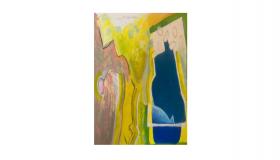
Looking at Wilson and Smuts, September 2020
Shifts in global politics make fertile ground for these contested re-appropriations. Adom Getachew’s world-makers took advantage of the bifurcated Cold War context that subdued US and European criticism of the right to self-determination in the hope of undermining the Soviet Union (78). More recently, Mauritius capitalized on Britain’s dwindling reputation among even imperial powers to reframe their demands for the return of the Chagos Archipelago into a judicial proceeding.
In 2017, Mauritius petitioned the UN General Assembly (UNGA) to consider a Request for an Advisory Opinion on the legal consequences of the separation of the Chagos Archipelago from Mauritius. The Assembly approved the Request by 94 votes to 15 with 65 abstentions. Many of Britain’s EU partners who might have been expected to support a post-referendum but pre-exit bloc member abstained, including France, Germany, Spain, Denmark, Belgium and the Netherlands. The following year UNGA dealt another blow to Britain’s international privilege. The British candidate to the International Court of Justice (ICJ) Chris Greenwood lost his seat despite having the Security Council’s support (by 9 to 5) after the Assembly voted 121 to 68 for India’s Dalveer Bhandari. This marked the first time Britain has not been represented at the Court since its inception in 1946.
Mauritius lobbied UN members to approve the Advisory Opinion Request and disapprove Greenwood’s candidacy. Both votes therefore represented a significant diplomatic victory, albeit one that rode the back of general declining British influence.
The Request for an Advisory Opinion asked two questions: ‘Was … decolonization of Mauritius lawfully completed when Mauritius was granted independence in 1968, following the separation of the Chagos Archipelago from Mauritius and having regard to international law?’ and ‘What are the consequences under international law … arising from the continued administration by the UK … of the Chagos Archipelago?’.
These questions provoked a review of the 1960s decolonization negotiations and timetables. Relationships and the relative power balance between Mauritian and British politicians came under considerable scrutiny. In amongst the piles of paperwork submitted to the ICJ was a powerful re-appropriation of Mauritian and British decolonization narratives. The Mauritian legal team reframed Mauritius’ independence story, otherwise characterized by cooperation and cordiality, to emphasize struggle and resistance against a backdrop of global forms of oppression. Their arguments drove a nail into the coffin of alleged British benevolence and ordered retreat from empire
For the Mauritian government this was a dispute over its self-determination understood as a right and as ‘a claim to independence and equality’ (74). However, for the British, this was a territorial dispute that, as their lawyers argued, had no place at the ICJ but should be negotiated bilaterally. For others such as the General Assembly and African Union the case represented an opportunity to 'decolonize' international law and to dispute the historic and contemporary relationship between Africa and the former colonial powers respectively. The Chagossian activist community was divided over whether or not to participate in the case. For many of those that did engage, the Court became another battleground to fight for their human rights and the right to return to the Archipelago.
In 2019, the Court concluded that ‘the process of decolonization of Mauritius was not lawfully completed when Mauritius acceded to independence’ and that Britain ‘is under an obligation to ... end its administration of the Chagos Archipelago’. The institutional and political backdrop of the Case enabled certain kinds of answers while disabling others (77). On the one hand, the Advisory reinforced the codification of self-determination that began in the 1950s and 1960s when it was limited to instances of alien rule (86). For the Chagossians therefore, the Advisory replaced one form of dominance (British) with another (Mauritian). Moreover, the recognition of permanent Mauritian sovereignty over the Chagos Archipelago is unlikely to engender Chagossian prospects for return. On the other hand, the Advisory exposed the post-colonial system of unequal integration and forced an imperial power to recognize, that increasingly it would no longer be considered a privileged participant. This means that as well as reframing narratives of the past, the Case enabled a redefinition of relationships in the present: it represented both anti-colonial resistance and post-colonial nationalism.
Conclusion
Activists around the world continue to contest the much-dented imperial hierarchies that shape the global political order. Such decolonial activism consistently re-appropriates the shifting realities of the status quo, building constantly on the contributions of preceding projects of resistance. Whether or not Adom Getachew or Bowling identify as activists, their work inspires new ways of seeing, thinking and doing. An application of Adom Getachew’s Worldmaking After Empire to this Indian Ocean case study highlights the parallel journeys that independence era politicians took and the inspiration they drew from anti-colonial imaginaries premised on connectivity. It emphasises the spaces in which anti-hierarchical politics flourished even where dependency relationships prevented their growth. Moreover, it foregrounds the efforts of demanding equality and equity even where their results are mixed.
The ICJ case described here was by definition an elite and reductive process that did little, if anything, to progress the cause of the Chaggossian people, who are still unable to return to the islands. The Courts judgment also shrunk self-determination’s application to instances of decolonization alone (Klabbers, 2019). This interpretation undermines the contemporary struggles of those seeking self-determination from within imperial and post-colonial states. To some extent it therefore reinforced many of the unintended consequences of Resolution 1514 that Adom Getachew describes (86) and by extension, reaffirms the status quo.
Despite its contradictions or limitations, this Mauritian resistance project highlights the possibilities of the current era ‘in which the once-dominant Western powers must reckon with their diminishing capacity to shape the international system to their on advantage.’ (Burri & Trinidade, 2020, 5). Bowling believed in the endless possibilities of paint. This passion created a new world of visual inspiration. Interpretations of Bowling’s canvasses are limitless and they no doubt often stray far beyond his intended meaning. Likewise, resistance is of course ‘inescapably shaped by the multiple, often-heterogeneous conditions of its possibility’ (Patil, 2013, 39). By tracing its anti-colonial forms over time and place we can sketch coordinates for new re-appropriations in world-making. Adom Getachew has already made a significant contribution to this effort; it’s for the rest of us to respond.
Author
Sarah Gray is a PhD student in History at SOAS. She has Graduate Diplomas in Arabic and Law. For the past ten years Sarah has been drawing inspiration from artists, feminist and decolonial thinkers while paying the bills working as a political analyst for clients across the private, non-profit and public sector. Drawing from a variety of methods and sources she aims to promote inclusive, creative and transnational research.
